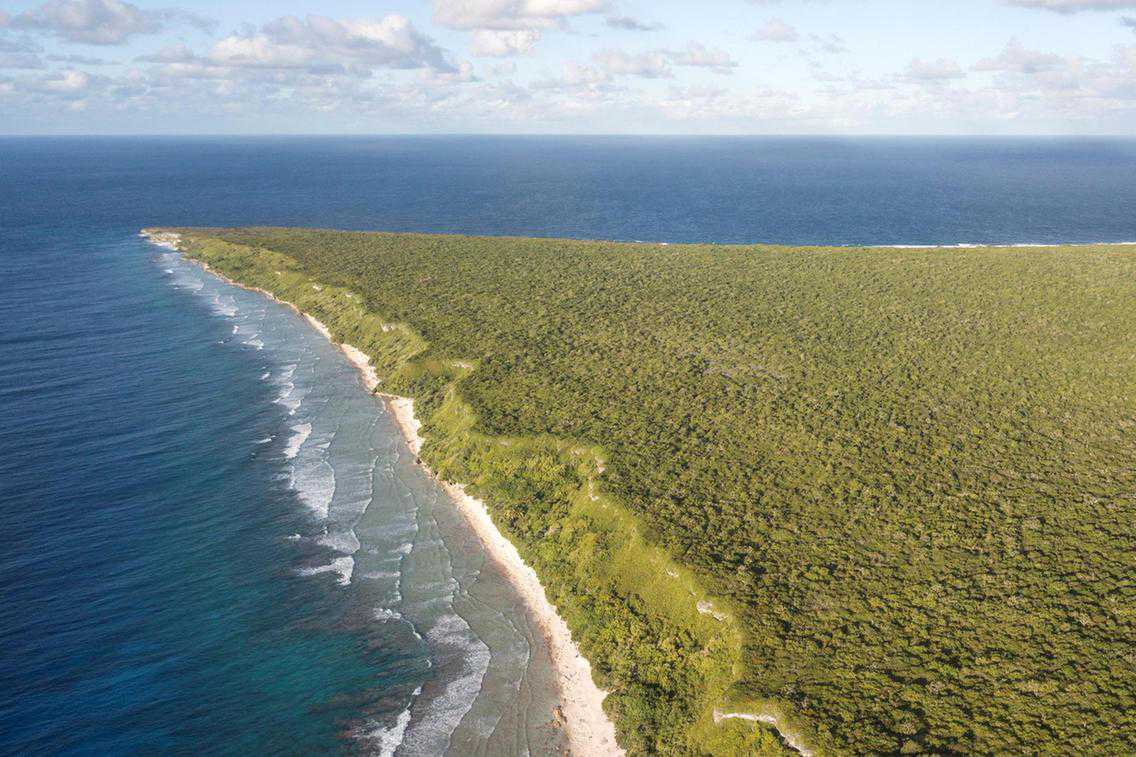Henderson Island: the Pacific paradise we're losing to a sea of plastic
31 July, 2019

Swaying coconut trees, pink-tinged sand beneath the toes and turquoise blue waters breaking over a coral reef. It’s the ultimate get-away fantasy. Until it becomes a terrifying reality.
When our inflatable boat capsized in pounding surf, there was no way off Henderson Island, a Unesco World Heritage site and one of the best remaining examples of an elevated coral atoll ecosystem. We were stranded on an uninhabited paradise, with no food, dressed only in shorts and T-shirts and with limited survival skills.
As the night closed in, and temperatures plummeted, we came dangerously close to hypothermia. Our lifeline was a cigarette lighter, flown across the sea to us, taped to a drone.
The back story
A group of 12 of us had made a six-day journey to the Pitcairn Islands group to study and clean up an enormous expanse of plastic rubbish washed onto Henderson by ocean currents. A 2017 study estimated it has the highest density of plastic debris ever recorded. Over two weeks, photojournalist Iain McGregor and I would document the expedition.
Joining us were divers Jon Slayer and Luke Hosty, who retired from the Royal Marines to make mesmerising documentaries about marine life. Steering the Rib was Jay Warren, a Pitcairn Islander who has spent 40 years navigating the surging seas around these parts.
But an inflatable raft, returning to the expedition ship after dropping us off on the beach, capsized while trying to cross a rocky, coral reef that runs a relentless line around the island. A piece of fishing rope snagged on coral caught in the propeller and a monster wave flipped the Rib like a toy.
We were stranded, among the trash we were sent to pick up. Rescue was seven days sailing away from Papae’ete. The last humans to be marooned on Henderson were sailors from the doomed whaling ship Essex in 1820. Their plight inspired the novel Moby Dick.
Evening high tide rolled in with an even bigger swell, impossible to cross. We’d be spending the night on the beach – with only a bag of breadsticks and two tins of cola.
With none of us dressed to spend the night without shelter, we needed to make a fire. We had no matches – but we did have two drones, used for filming. So we signalled the expedition ship, using a radio, and asked them to tape a lighter to the drone we sent across half a kilometre of ocean. As the sun went down and the air chilled, it was our lifeline.
A cold, cold night
Henderson’s coastline is cut with caves and caverns, but after disturbing three hefty rats, we decided to sleep on the sand, and began gathering wood for a fire. We scavenged among the plastic debris to make camp. Fishing buoys become seats. Nets made a hammock, keeping Warren off the ground. A twisted mound of fishing rope was a bed, with an inflated life vest a pillow.
Dusk falls swiftly in the South Pacific, and with the inky blue darkness came the cold. At about 9.30pm, I started to shiver uncontrollably, great shudders starting from the centre of my body. Hosty showed us how to “cuddle” for body heat.
For most of the night, McGregor and I clung to each other, limbs pressed hard together. Over hours – I stopped counting after five – we developed a rhythm: spooning on one side until one of us was warm, then turning over to warm the other, before finally sitting up to the fire. It stopped us slipping off the edge into hypothermia.
The first task was to remove all the fishing buoys from that area, throwing them into a large pile. In total, 1,200 were gathered
As dawn broke, the surf was pounding down on the reef even heavier and louder than the day before. When the tide started to drop, we knew that it was now or never. The Rib was dragged back down the beach and we all counted each wave: five small ones and then three huge, building rollers. We’d be at the mercy of that final wave, with no way to turn back.
Cold, salty spray slapped our faces. The first wave took us up. The engine bounced off the reef and caught for a brief, horrifying second. The next wave threw us high in the air. I gripped the ropes, gasping in terror as the third rose up ahead of us. It was massive, blocking out the sky and the ship ahead.
The motor cracked the reef again, just as we launched forward at a 45-degree angle. Suddenly, we broke through the wave and bounced down onto the deeper, calmer ocean. We made it safely off the island, but the shipwreck threw plans for the expedition into chaos.
